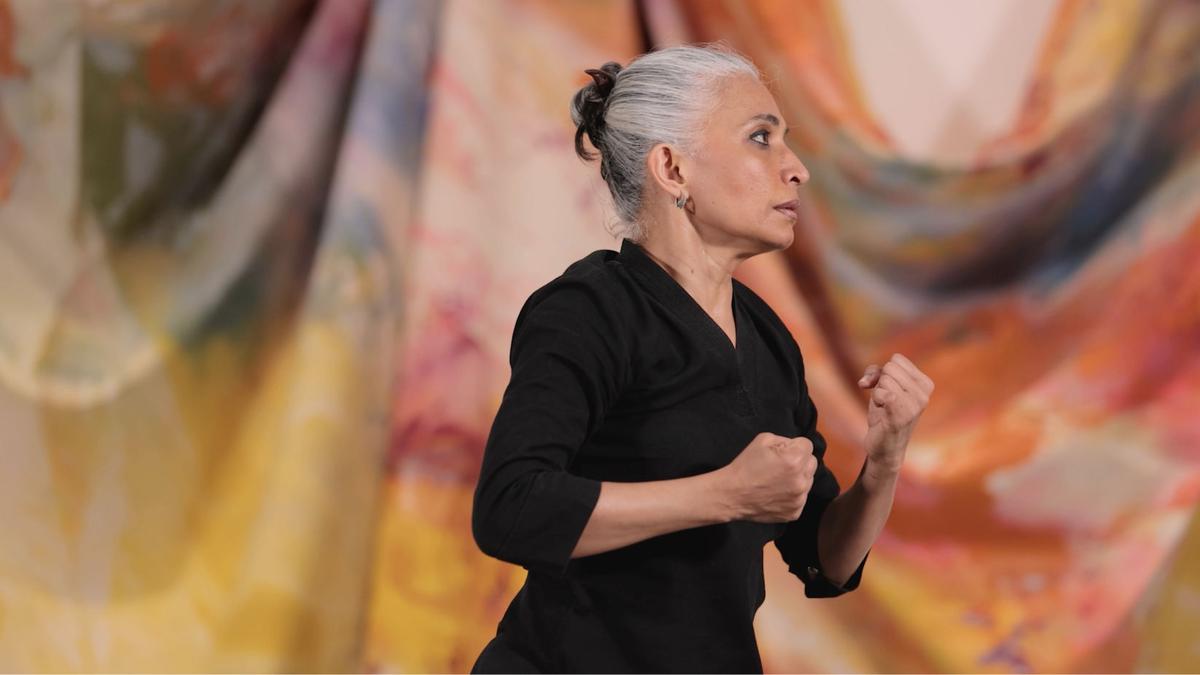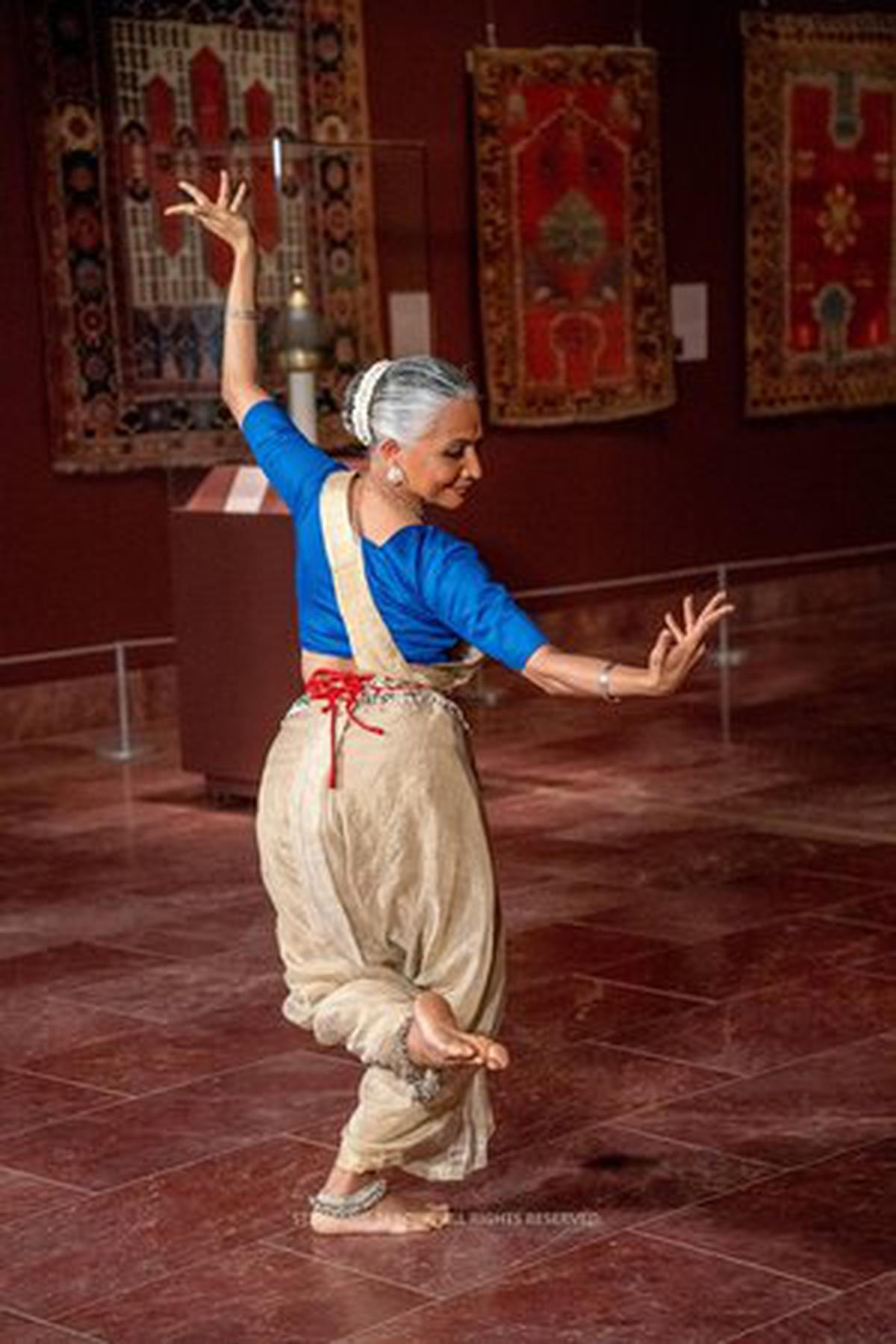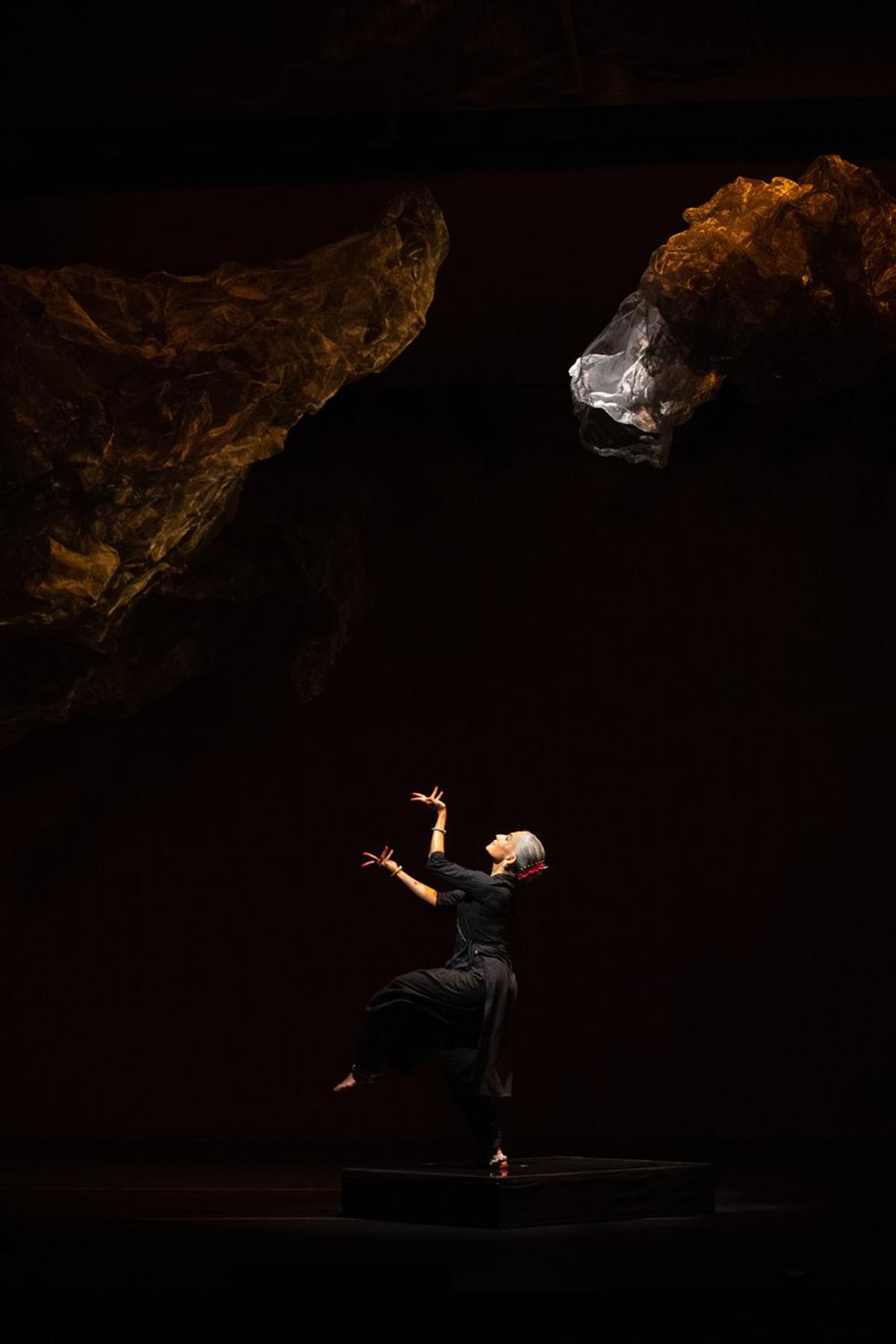Elegant in a monotone black angarkha and salwar, Bijayini Satpathy embodied the act of prayer with slow, suggestive movements, as she re-invented her style in ‘The Prayer’ at Chapter House at The Met Cloisters. This was one of the four original, site-specific choreographies collectively named ‘SimA – Thresholds’, presented at the Metropolitan Museum of Arts in New York in May 2022, where she was the artist-in-residence. What followed was a ticketed, live performance ‘Doha’ in September last.
When Covid was scaring the world and people were rushing to get home, Bijayini took the last flight out of India. She quarantined for a week in a hotel in New York, before commencing her residency. Museums were shut by then. She recalls how she was given personal tours of the museum, with no one else around. At first, Bijayani was overwhelmed — the Metropolitan Museum of Art spread across three venues, showcases 5000 years of art, with close to half a million exhibits. Where does one start? She would film the spaces, measure the areas, and collaborate with the composer Bindhumalini Narayanswamy to decide the where, the what and the how. She came back to rehearse — they were open rehearsals with the public watching.
As part of the Met’s celebration of Asian American and Pacific Islander Heritage Month, MetLiveArts looked back on Bijayini’s residency, with an online discussion among the artiste, composer and Limor Tomer, from the museum, and the digital release of her works.
Movement vocabulary

Bijayani in ‘Antaranga’
| Photo Credit:
Stephanie Berger
The challenge for the artiste was to create an almost original movement vocabulary and music without boundaries. Having left Nrityagram as principal dancer after about 25 years, where they enhanced the curves of Odissi through choreography, Bijayini was developing herself as a solo artiste. The physicality of her style grew to include her daily ritual of yoga and pilates, giving it a meditative, intentional feel. From here, the leap into abstraction was organic, a leap nonetheless. Bijayini’s research into the charis and the anatomical references in the Natya Shastra, the latter guided by Irene Dowd, added to her movement dictionary.
Each of the four in ‘SimaA Thresholds‘ was unique. The inspiration was from varied sources. The location of ‘The Prayer’ in a European medieval reconstructed monastery dictated the mood which was meditative, and free flowing. The music reflected prayers from different backgrounds — Buddhist,Hindu and Islamic. One flowed into the other seamlessly, just as the expansive movements and deep squats occasionally referencing Odissi did. The upturned palms were a lietmotif of the 17-minute non-rhythmic piece. The filming by Elliot Stern and team added to the imaginative process, as the moving cameras captured the evocative space and the movements at once.
For ‘Taru’ meaning tree in Sanskrit, Bijayini was dressed up in a pretty Odissi costume of beige and blue. It was not to perform traditional Odissi, but for a take on Odissi. The music, a tarana, unusual for an Odissi repertoire, was chosen for its Persian origin to match the intricate Persian carpets in the Islamic art gallery. Adding accompaniments like the guitar, strings, and the Persian-origin Oudh changed the feel of the melody. This was a winsome performance — light-footed, graceful and joyous, with frequent references to trees and blossoming flowers.

Bijayani Satpathy performing ‘Taru’
| Photo Credit:
Stephanie Berger
In ‘Antaranga’, Bijayini showed us how intensity can be conveyed through angika abhinaya, the body, as the ancient Greek poem, Sappho Fragment 31 about love, longing and agony, was recited (Niti Bagchi) in parallel. The music was low key — soft percussion and an occasional melody — created by Bindhumalini. It was performed in the Modern and Contemporary Art Gallery in front of a large, vibrant draped canvas painting by Sam Gilliam, whose life and works informed the sequence.
The Ming dynasty-modelled Chinese Rock Garden, named the Astor Chinese Garden Court, was the site for ‘Naino’. Bijayini used the hand gestures and metaphors of Indian classical dance in this Kabir doha ‘Naino antar aav thu’ as the woman asks her beloved to ‘come into her eyes’. It was the idea of love, rather than a narrative of love, that allowed space for abstraction, while using metaphors of the moon rays affecting her and the lotus, the bees and the flowers, the woman in love waiting by the water, et al. It was unpretentious, just winsome. And made approachable by her simple cotton practice sari costume. Soulful Hindustani music (Bindhumalini) sounded different with the sounds of the Yangqin (Kimho lp), Bouzouki (Sridhar Varadarajan) and the banjo (Bindhumalini).
Fuss-free portrayal

Bijayani in the piece ‘Doha’
| Photo Credit:
ALEXIS SILVER
The final ‘Doha’ was a culmination of Bijayini’s journey. The theme was ‘From prayer to play’, on a non-figurative, international canvas. It ended with a beautifully sung (Bindhumalini) Urdu doha ‘Ahistha’ by Mir Taqi Mir meaning ‘Slow down your breath to protect the universe.’ Dressed in an all black angarkha-salwar with minimal jewellery and her salt and pepper hair in a tight bun, Bijayini shorn herself off of the customary glamour. There was nothing to distract the audience from her singing limbs, the evocative music (Bindhumalini Narayanaswamy) and the stunning sets and lighting (Sujay Saple).
As ‘Doha’ transitioned from meditative to rhythmic and soulful to happy and profound, in a seamless flow of music and movement, Bijayini was eloquent with the new abstraction. The movement sans footwork was graceful and poetic. It may have looked like Odissi, but was not. She had borrowed from her short choreographies — the prayerful chants with expansive movements and the upturned palm, and the happy tarana. This was the first time we heard the mardala in this milieu along with Bijayini reciting the bols in the rhythmic segments. While her physicality and her body conditioning dominated, her facial expressions, that were subtle, came through in the quieter moments.
With the kind of support and exposure the Met gives, Limor Tomer hinted at a ‘before and after’ in the careers of artistes of the Artist-in-Residency programme. What will Bijayini be in the future? We have to wait and see.
For all the latest Entertainment News Click Here
For the latest news and updates, follow us on Google News.
